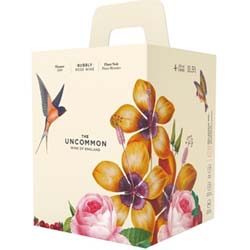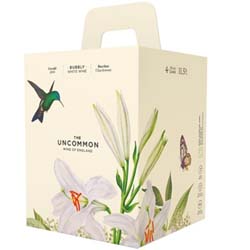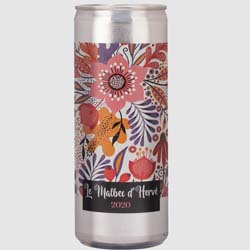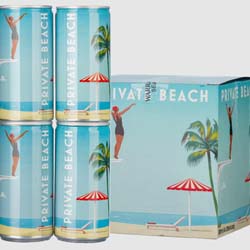Is the Glass Bottle a thing of the past?
Chris Burr, MW, looks at the changing landscape of Wine packaging
By Master of Wine, Christopher Burr
Updated 26/07/2024

In the first of a series of articles about how the wine industry can reduce its carbon footprint, Christopher Burr explores current research and thinking.
The UK Government has pledged to cut carbon emissions 78% by 2035, and become carbon neutral by 2050, so how can the wine industry play its part?
The wine industry, as much as anyone, is mindful and concerned about the environment. Global warming is affecting many growing areas, and there is a great deal of research and change going on in grape growing and viticulture. Research looking at cooler sites, earlier harvesting, different trellising and training, and even different grape clones and varietals, should the climate continue to become warmer.
But one of, if not the most, carbon dioxide generative parts of the industry is bottle production, shipping and recycling. One glass bottle generates about 360 grams of CO2 in production, then add further packaging, closures etc., and the cost of freight and delivery of these heavy containers, and it is probably well in excess of 400 grams.
The UK Government has pledged to cut carbon emissions 78% by 2035, and become carbon neutral by 2050, so how can the wine industry play its part?
By comparison, a PET or plastic container generates no more than 240 grams, and with a suitable closure like a composite cork, could be carbon neutral. Transport weight is an added benefit. But of course, these are petro chemical based, so have lots of disadvantages mainly around being non-degradable. They could be an interim solution though. Rather like nuclear and gas power as an interim replacement for coal.
Tetra Pak and some pouches have also been trialled, but with combined layers of materials and plastic closures, they are found to be one of the worst solutions, apart from weight.
Another solution which is proving excellent, particularly as they have selected some good wines to fill them, are cans. They are highly protective of the wine, the cans are lined with a protective layer, so no taint or oxidation. And they are great for sparkling wine, whereas flimsier alternatives cannot stand the pressure from a sparkling wine. One of the best, and well worth trying is the Uncommon Wine of England Eleanor Sparkling Rose, being sold at Fortnum and Mason, 4 x 25cl cans for £18.95.
Waitrose have the Uncommon Bubbly Sparkling White for the same price. Laithwaites also have a selection of good French wines, two sauvignon blancs, a southern French rose, and a juicy Malbec, six 25cl cans for £13.08.
But consumer research shows that consumers are reticent to experiment with packaging other than bottles. Indeed it has taken years for many to accept the Stevin Screw cap closure instead of cork, now found everywhere and on top class wines.
There is very interesting research however being done into a biodegradable synthetic polymer made from corn starch and other vegetable waste, which can produce a hard surfaced hardy clear substance which looks like glass. Also, the work being done on clear forms of cardboard or wood based regrowable substances, but this may be good for other liquids, probably not for wine.
…it has taken years for many to accept the Stevin Screw cap closure instead of cork, now found everywhere and on top class wines.
Many manufacturers and retailers have, as a first step, jumped on bottle recycling to help, but this doesn't reduce emissions significantly. There is still initial CO2 and pollutant emission in production and also high transport costs.
But in Germany there is a strong movement towards returnable/refillable bottles, something many of you will remember was used for beer and several liquid products years ago, and wine in many wine producing countries.
The bottles were heavy and marked with stars to show they were returnable. A redeemable deposit per bottle was charged, and bottles were taken to a local winery or retailer for refilling. Here, in the UK milk bottles were also returnable, but had to be washed and sterilised before refilling.
Most UK retailers now have a carbon reduction policy and plan, some look more like a public relations plan than others which look more serious.
One wine merchant, Laithwaites, have a pretty comprehensive plan and continue to explore and develop ideas for trial with their suppliers. The Laithwaite family are also wine growers themselves, so as they grapple with the idiosyncrasies of climate, perhaps this has been part of their keen motivation to inspire change.
Laithwaites have committed to reaching net zero carbon emissions by 2035.
They rekcon glass and its transport accounts for 68% of the Company's carbon emissions, with wine making between 15 and 17%. They have started by moving to 100% recyclable glass, but they are continuing to research acceptable alternatives.
To show some immediate action, Laithwaites have launched an Organic Sicilian Red, Frappato 2020, which is a most enjoyable complex wine, packaged in 100% recycled glass, called "wild" glass by the manufacturer, a first in the UK. One of Laithwaites most valuable actions is to invest in forestry progames to offset their own Carbon Footprint.
It will be most interesting to see how packaging changes over the next few years, probably led by how fast consumers start to accept alternatives.
Some commentators predict the end of the glass bottle, particularly the very heavy bottles which look great and very premium, but.....
I suspect the great collectable and some other premium wines which need ageing and keeping, less than 2 or 3 per cent of all wine production, will continue to use glass for the moment.
But it is interesting to look at History. Until the seventeenth century wine was held in amphorae and various ceramic vessels, then barrels, to store and transport wine. Then in the fourteenth century the Venetians on the island of Murano started to make glass bottles. But in the seventeenth century the English makers like the Whitechapel works and Bristol glassmakers, started making glass bottles which were sturdy and strong enough to ship, and also hold sparkling wines.
So Glass is a relatively new container for wine, given the history of wine drinking going back 6000 years! Maybe glass bottles have had their time?
SHOP FEATURED PRODUCTS
The Uncommon Sparkling Rose

The Uncommon Sparkling

Le Malbec d’Herve

Private Beach Sparkling Rose
